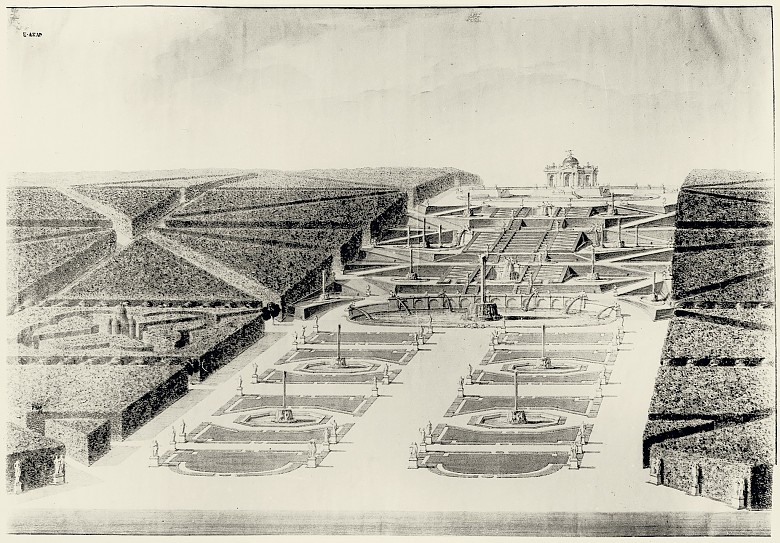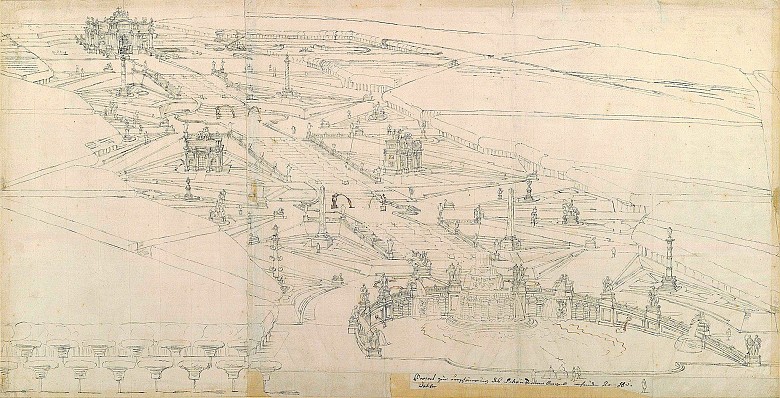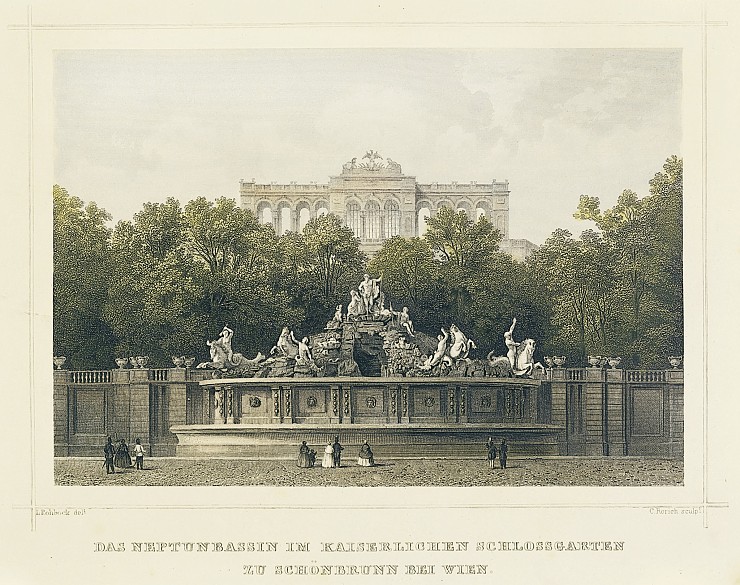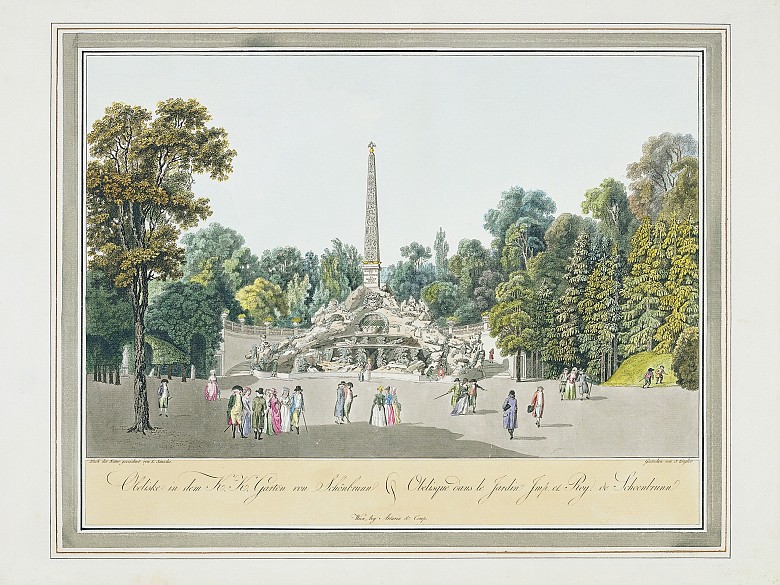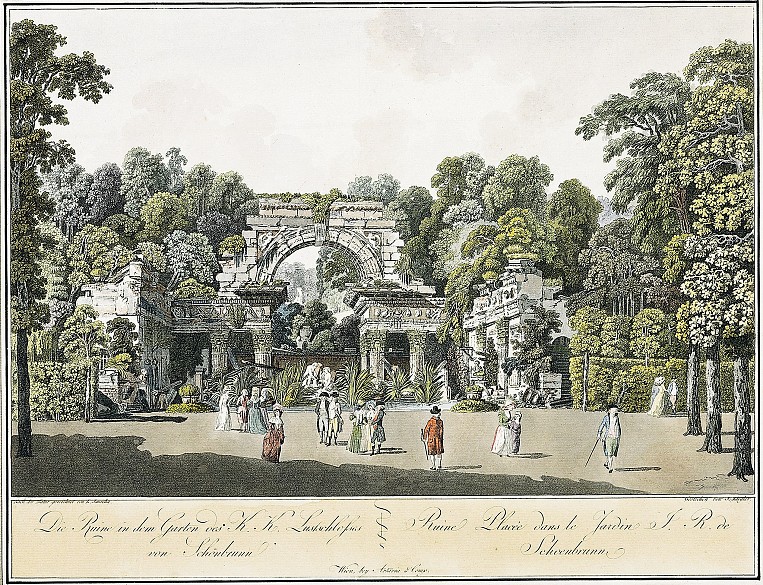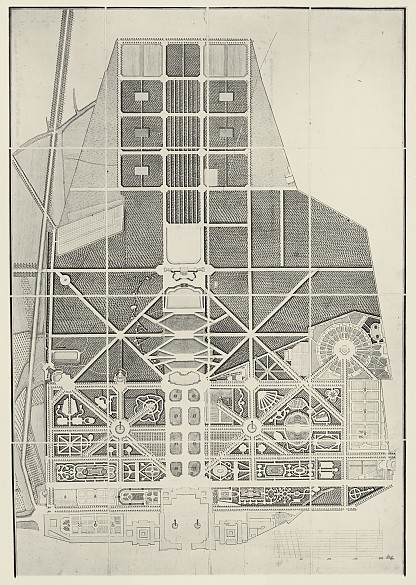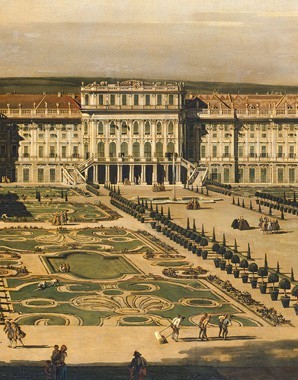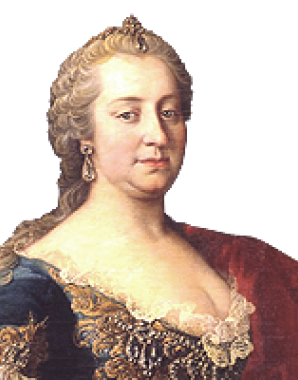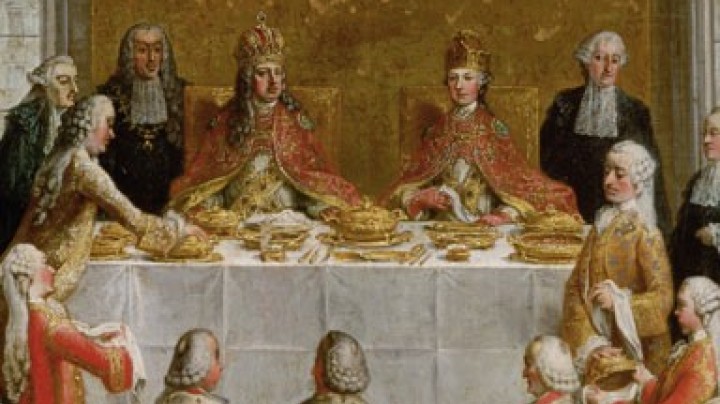In the company of gods and heroes – the Habsburgs, Schönbrunn and classical antiquity
In the last decade of her life, Maria Theresa set about remodelling the park at Schönbrunn. The park was to serve as a medium to express the sovereign status of the dynasty. The results were enjoyed not only by the Court but also the general public, to whom the park was opened from 1779.
The ideal point for visitors to experience the majestic view where all the axes of the park converge is the south terrace of the palace. From here one has the best view of the most important set pieces inspired by classical mythology and invoked by the dynasty to reinforce its claim to imperial power.
At first one’s gaze is drawn towards the Gloriette, which crowns Schönbrunn Hill as a triumphal arch commemorating the victorious Habsburg armies. The lay-out of the hill was one of the major problems of the gardens at Schönbrunn in the eyes of horticultural designers, as it contradicted the principles of the Baroque garden, which was supposed to flow unhindered into the infinite distance of the landscape. The architect Johann Ferdinand Hetzendorf von Hohenberg had originally planned to enliven the slope with numerous waterworks, fountains and cascades. This elaborate design was eventually realized in a severely reduced form – a not uncommon outcome of Habsburg projects. The erection of the Gloriette as a counterpoint to the palace provided the main axis of the gardens with a terminating point de vue.
Between the Gloriette and the palace, the Neptune Fountain frames the central floral parterre as the climax of the park’s programme of statuary. Heroes, gods and rulers of classical mythology were invoked as witnesses to the Habsburg claim to the inheritance of imperial power, explicitly linking the emperorship of the House of Habsburg to that of ancient Rome.
The same ideology underlies the Obelisk, an ancient symbol of steadfastness and the power of the human spirit, which rises as a purely geometric form above the roughcast rock grotto that forms its base. It is topped by an eagle, symbol of imperial sovereignty, while its sides are decorated with spurious Egyptian hieroglyphs purportedly celebrating the eternal glory of the House of Habsburg.
The architectural structure today known as the Roman Ruin at Schönbrunn also represents a link with antiquity. Its original name, ‘The Ruins of Carthage’, represents the Habsburg emperorship as successor to the rulers of ancient Rome, which held sway over the whole of the classical world after the defeat of Carthage. In the distance, framed by the main arch of this theatrical man-made ruin, is a statue of Hercules. The emperors from the House of Habsburg had always identified with this ancient hero who solves the labours he is set with tenacity and perseverance and is eventually taken up in triumph to Olympus to join the gods.
